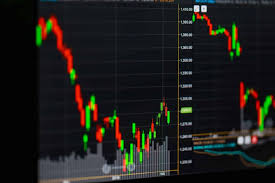
Understanding the Forex Market: A Comprehensive Guide
The foreign exchange (Forex) market is one of the largest and most liquid financial markets in the world. With a daily trading volume exceeding $6 trillion, Forex provides ample opportunities for traders to profit from fluctuations in currency values. To begin your journey in Forex trading, it’s vital to have a robust understanding of market dynamics, trading strategies, and risk management. For those interested in Forex platforms, consider exploring forex market trading MT4 Forex Brokers, which offer excellent tools for traders.
What is Forex Trading?
Forex trading involves buying and selling currency pairs in the hope of making a profit. Currency pairs are quoted in terms of exchange rates, which indicate how much of one currency is needed to purchase another currency. For example, in the EUR/USD pair, the value indicates how many US dollars are needed to buy one Euro. The primary objective in Forex trading is to speculate on the movement of currency pairs, predicting whether they will appreciate (increase in value) or depreciate (decrease in value).
How Forex Trading Works
The Forex market operates over-the-counter (OTC), meaning that trading does not take place on a centralized exchange but rather through a network of banks, financial institutions, and individual traders. This decentralized nature allows for continuous trading 24 hours a day, five days a week.
Major Currency Pairs
In the Forex market, currencies are categorized into three main groups: major, minor, and exotic currency pairs. Major currency pairs, including EUR/USD, GBP/USD, and USD/JPY, are the most traded and usually have the highest liquidity. Traders typically focus on these pairs to capitalize on stable movements and lower spreads.
Leverage in Forex Trading
One of the critical features of Forex trading is the availability of leverage. Leverage allows traders to control a larger position size with a smaller amount of capital. For instance, with a leverage ratio of 100:1, a trader can control $100,000 with just $1,000. While leverage can amplify profits, it also increases the risk of significant losses, making risk management an essential aspect of Forex trading.
Forex Trading Strategies
Trading strategies in Forex can vary widely based on trading styles, risk tolerance, and market conditions. Here are some of the most popular Forex trading strategies:
1. Day Trading
Day trading involves opening and closing trades within the same trading day, aiming to profit from short-term price fluctuations. Day traders typically use technical analysis, chart patterns, and market indicators to make quick trading decisions.
2. Swing Trading
Swing trading is a medium-term trading strategy that seeks to capture price swings over several days to weeks. Swing traders often rely on fundamental and technical analysis to identify entry and exit points based on market trends.
3. Scalping
Scalping is a high-frequency trading strategy that involves making numerous trades throughout the day to profit from small price movements. Scalpers typically hold trades for seconds to minutes, relying heavily on technical analysis and tight spreads.
4. Position Trading

Position trading is a long-term strategy where traders hold positions for weeks, months, or even years, based on fundamental analysis and macroeconomic trends. Position traders are less concerned with short-term volatility and focus on long-term market movements.
Risk Management in Forex Trading
Effective risk management is crucial in Forex trading to avoid substantial losses. Here are some key components of risk management:
1. Set Stop-Loss Orders
Utilizing stop-loss orders can help limit potential losses. A stop-loss order automatically closes a trade when a currency pair reaches a certain price, protecting traders from significant downturns.
2. Determine Position Size
Calculating the appropriate position size for each trade is essential to manage risk effectively. This calculation is often based on the trader’s account size and the percentage of capital willing to risk on a single trade.
3. Diversification
Diversifying trading positions across different currency pairs can reduce risk exposure. By spreading investments, traders can mitigate the impact of adverse movements in a single currency pair.
The Role of Analysis in Forex Trading
Successful Forex trading relies heavily on analysis. There are two primary types of analysis used in Forex: fundamental analysis and technical analysis.
Fundamental Analysis
Fundamental analysis involves examining economic indicators, political events, and other factors that influence currency values. Key indicators include interest rates, employment data, inflation, and geopolitical stability.
Technical Analysis
Technical analysis focuses on historical price movements and trading volume to predict future market behavior. Traders use charts, patterns, and technical indicators to identify potential trading opportunities and trends.
Choosing a Forex Broker
Selecting the right Forex broker is crucial for successful trading. Factors to consider when choosing a broker include regulation, trading fees, available trading platforms, customer support, and the range of currency pairs offered. It’s important to choose a broker that aligns with your trading goals and preferences.
Conclusion
Forex market trading offers significant opportunities for profit, but it also comes with inherent risks. By understanding market dynamics, employing effective trading strategies, and implementing robust risk management practices, traders can navigate the complexities of the Forex market more effectively. Whether you are a beginner or an experienced trader, continuous learning and adaptation to market conditions are key components of long-term success in forex trading.
